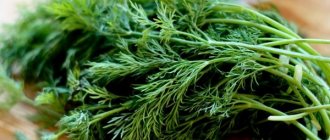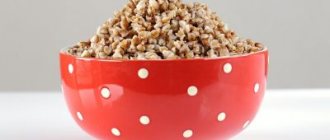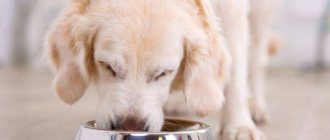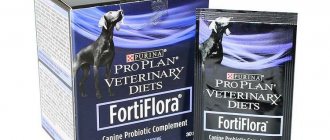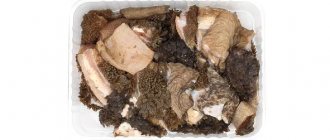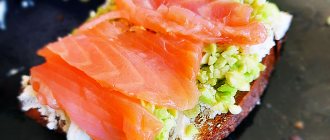An owner who loves his pet strives to provide him with healthy, varied food. If a dog receives ready-made food, the manufacturer most likely took care of the benefits of such food. But there are dogs that, for one reason or another, eat exclusively natural food. And then the owner has a lot of questions related to the benefits or harm of certain products. One of them is whether dogs can have chicken liver, beef kidneys or heart, in general, what is commonly called offal.
Advantages and disadvantages
The liver brings many benefits to the body of pets.
With its regular use, the immune system is strengthened, toxins are eliminated, and the active formation of new cells begins.
What substances does it contain?
The product contains many substances necessary for the body, including vitamins D, E, PP, K, C and A. It also contains:
copper;- magnesium;
- potassium;
- fluorine;
- iron.
The liver contains many amino acids necessary for the full functioning of the dog’s body.
Is offal given to puppies?
Liver can be given to puppies, but in small quantities. This product is also not contraindicated during pregnancy and lactation.
Benefits and harms for older animals
You can give offal to dogs in old age, but with the utmost caution. The extractive components it contains can be harmful.
Therefore, you should include it in the menu no more than 2 times a week. One serving is only 50 g.
Harm
Of course, any product has its limitations and contraindications, which dog owners should be aware of so as not to harm their pet.
This offal contains a large amount of vitamin A. If you give dogs too much liver, they may experience a vitamin overdose. This process in the body causes muscle weakness, bone spurs, and malfunctions of the digestive system.
There is also a danger that the offal may contain hormones and various food additives that were fed to the chicken.
When liver is a prohibited product for a dog
Despite the enormous benefits of the offal, there are a number of contraindications for its use as dog food.
For example, if your pet has high cholesterol levels, it is worth discussing the advisability of including liver in the diet with your veterinarian. It contains its own cholesterol, which can be deposited in blood vessels.
Also, this product should be discarded if the animal has problems with the heart and blood vessels. For such health problems, it is allowed to give the animal only small portions.
Also, caution should be exercised when introducing liver into the menu if there is a disturbance in the gastrointestinal tract. Against the background of its use, the situation may worsen, causing diarrhea or constipation.
Daily ration
Meat should account for an average of 30-40% of the total food that the animal eats daily. When calculating the required amount, you should take into account the breed, gender, weight, temperament and lifestyle of the pet.
So, if a dog lives in an apartment and doesn’t run around much, 10-20 grams of meat per day per kilogram of weight may be enough for him. An active, energetic, athletic young dog or working animal (hunter, rescuer, etc.) needs more - up to 30 grams of meat per day per kilogram of its weight.
The norms for growing puppies have been increased, because they need a lot of microelements to form all body systems. In addition, at the age of about a year, most dogs are especially active and mobile, which means they need a complete protein diet.
The table below shows approximate values for pets of different breeds (in kilograms per day).
| Breeds | Puppy 6-12 months | Adult dog | Older dog (over 8 years old) |
| Small (an adult dog weighs less than 10 kg) | 0,5-1 | 0,4-0,8 | 0,3-0,8 |
| Medium (an adult dog weighs 10-25 kg) | 1-2 | 0,8-1,5 | 0,6-1 |
| Large (an adult animal weighs more than 25 kg) | 1,5-2,5 | 1-2 | 0,8-1,5 |
You can use the following formula for calculations: X * 2/100, where X is the weight of the dog. For example, if a dog weighs 30 kg, multiply this number by two, divide by one hundred and get 0.6 kg of meat per day.
The norm should be increased for a very active dog, for a weakened dog (for example, after an illness) or when fighting obesity (the number of fats and carbohydrates decreases, the percentage of proteins - meat increases). Then the formula will look like this: X*3/100. For example, if the dog weighs the same 30 kg, multiply by three, divide by one hundred and get 0.9 kg per day.
Which is better: raw or boiled
Often dog breeders decide to give their pets raw liver. The dog will happily eat such an offal.
But after this she may experience diarrhea, and there is a risk of helminth infection: their eggs are often contained in the offal.
Therefore, it is better to boil the treat and only then give it to your pet. The heat treatment is short and maximum benefits are retained.
Choosing a quality product
It is extremely important to choose a liver responsibly so as not to harm your pet.
Several important nuances deserve attention.
Color
The offal should have a red-brown tint. It is unacceptable to have any stains on it. The liver's blood is scarlet. If it is dark, then the product is clearly stale.
Smell
Normally, the product emits a sweetish aroma. A slight smell of ammonia indicates its staleness.
Fresh or frozen
You can find both fresh and frozen products on sale. The second option, as a rule, is cheaper than the first, but it contains significantly fewer useful elements.
Therefore, it is recommended to give preference to fresh liver.
Nutritional quality of offal
The basis of the carnivore menu is animal protein. In addition to meat, four-legged animals enjoy eating kidneys, lungs and udders. Adding them to food will not only diversify the menu, but will also have a positive effect on the body.
Beneficial features
Offal contains a large percentage of nutrients. In this they are superior to regular meat. All parts of the animal carcass are an irreplaceable source of animal protein, without which the life of a four-legged friend is impossible.
The trim contains the following elements:
- phosphorus
– responsible for oxygen enrichment and skeletal health;
- iron
– regulates oxygen metabolism;
- zinc
– necessary for the functioning of the nervous system and healthy coat;
- potassium
– supports the functioning of the kidneys and heart;
- selenium
– natural antioxidant;
- magnesium
– needed for health and good muscle development;
- iodine
– ensures uninterrupted operation of the endocrine and cardiovascular systems.
Trip is rich in amino acids, vitamins B, A, K, E and D. The latter is necessary to strengthen the pet’s muscles and bones, prevent the development of malignant tumors, rickets and other autoimmune diseases. Giblets have no equal in vitamin D content.
Eating trimmings is especially useful for dogs living in the northern regions. The lack of sunlight and the resulting deficiency of chemical elements is compensated by the addition of tripe.
Giblets are an irreplaceable source of energy for cells, as they contain Omega-3 and Omega-6 amino acids. In addition, liver contains a small proportion of carbohydrates and fats, so it is classified as a dietary product.
Unpleasant consequences
Sometimes a four-legged friend has an individual intolerance to some or all types of tripe, even in small quantities. Such a reaction is expressed in the form of vomiting, diarrhea or food allergies.
A pet suffering from intolerance begins to behave irritably. He becomes lethargic and refuses to eat. A rash characteristic of an allergy appears on the surface of the face, paws, and ears. Sometimes it is visible on the armpits and in the anal area.
An excess of the allergen provokes infections on the skin or ears. The body becomes covered with red itchy spots, and hair loss occurs.
To eliminate the problem, it is enough to exclude allergens in the form of chicken and animal entrails. And in the future, add only lean varieties of meat to the allergy sufferer’s menu.
Proper processing
The offal must not only be selected correctly, but also processed. In this case, you should follow a number of simple recommendations.
In what form should I give it to my dog?
Before cooking, the liver must be cleaned of veins, washed and kept in cold water for about half an hour.
Then it is boiled. You can also add vegetables if desired. Due to this, the offal will be tastier.
You can not only cook the liver, but also stew it. You shouldn't fry it for dogs. With such heat treatment, it will become hard, dry, lose a large number of beneficial properties, and cholesterol levels will increase.
Recipes for pets
There are many recipes for preparing delicious treats.
You can make pate for your animal. You will need:
- liver – 200 g:
- cream – 1 tbsp;
- sunflower oil – 1 tsp.
The offal is cut into pieces and stewed over low heat in oil. After a quarter of an hour, cream is added to the container, everything is crushed using a blender.
The resulting pate can be added to other dishes. You can form it into balls that your dog will eat with pleasure.
How to cook?
Preparation is extremely simple: before consumption, boiling water is poured over the neck, veins and cartilage that are difficult to chew are removed.
There is no need to add salt, pepper and seasonings; they will cause disturbances in the digestive tract. After this, the product is given to dogs. You can mix it with vegetables or porridge. Boil the necks for 50 minutes. This way they chew better and destroy all microbes. But experts warn that the boiled product can cause intestinal obstruction. For this reason, it is given in small quantities - no more than 50 g.
Recipe
Necks are often cooked along with cereals and vegetables. It turns out to be a tasty and nutritious dish.
Mix 100 g of boiled rice and 50 g of boiled necks. Cooking them is enough for 50 minutes. They will become softer and easier to chew. To this mixture add one boiled carrot and stewed zucchini. They are finely chopped and mixed with the rest of the ingredients.
The result is a delicious nutritious mixture. Add 4-5 tablespoons of sunflower or olive oil to it so that the food is not too dry and is better absorbed. There is no need to salt and pepper it. The dish is ready to eat.
How long to cook?
You need to cook them for 45-50 minutes. It is difficult to give an exact time, since everything depends on the quality of the product. It is considered ready when it becomes soft. In some cases, the product needs to be cooked for 1 hour.
This is especially important if your pet’s teeth change and he will not be able to chew on too hard necks.
Should I feed them fried?
Experts do not recommend frying necks, since during the frying process they become fatty, high in calories, and soaked in a large amount of oil. This negatively affects the functioning of the pet’s gastrointestinal tract and organs. If he is not used to fried food, nausea and vomiting may occur.
Fried food has a negative impact on the dog's heart. To preserve her health, they refuse to fry her.
Dry food with liver
The by-product is often added to industrial feeds. They have their pros and cons.
Advantages
Among the advantages of feed, the following qualities should be highlighted:
there is no need to prepare food for your pet, just measure the required amount and pour it into a bowl;- the daily norm is indicated on the packaging; there is no need to independently calculate the optimal portion size;
- balanced food saturates the pet’s body with all useful substances;
- the cost is lower than that of natural products.
Flaws
This type of feeding also has disadvantages:
it is impossible to reliably know what is included in the product;- high risk of allergies due to incorrect choice of food;
- a low-quality product can lead to health problems.
In what cases are by-products beneficial?
Chicken necks, like other parts of the poultry carcass, are one of the most affordable additives to dry dog food. However, it should be remembered that during long-term storage such products lose most of their beneficial qualities. At low temperatures, offal can be stored for no more than 2 months, and when completely frozen - up to 4 months. It is not recommended to feed pets with expired food: this can lead to indigestion and other diseases.
How to properly feed puppies and adult dogs?
Much depends on the breed and size of the dog. For small breed animals, it is recommended to add no more than 50 g of meat products to the food per feeding. For large breeds, it is necessary to consume up to 250 g of offal. You should not use such food as the basis of your diet; the recommended number of feedings is 3-4 times a week.
It is worth knowing that if you give your dogs chicken parts or another new product that was not previously included in the diet, you should monitor your pet’s health for a while: unfamiliar types of food can cause digestive upset or cause allergies.
How to prepare breastfeeding shakes
Opinions differ regarding the correct preparation of necks. Some dog breeders argue that boiled necks and other offal should not be given to dogs and puppies as food, while others argue that such food must be thermally processed.
- The first cooking method, which is used by a large number of pet owners, is simple: chicken necks are doused with boiling water, cooled and added to the main food. For puppies, it is recommended to pass the necks through a meat grinder (along with the vertebrae) or beat them with a hammer until they turn into a homogeneous mass.
- The second recipe is preparing porridge for a dog with the addition of meat products. The following cereals are usually used with chicken necks: buckwheat, rice, pearl barley, barley and wheat.
Cereals such as millet, semolina and corn are not suitable for feeding the dog. If you give such cereals, remember that it can be dangerous to the health and life of your four-legged friend.
The porridge is prepared simply: first, chicken necks are added to boiling water for 15-20 minutes (they need to be boiled), after which the cereal is poured into the broth. During cooking, you should remove the brown foam that appears on the surface of the food container several times. We give the dog this food 3-4 times a week.
After boiling the cereal, the porridge is covered with a lid and evaporated for some time in the oven.
One day while scrolling through the search, I came across a discussion on “Is it possible to give chicken necks and chicken heads to a dog?”
In this article on the website “Around Dogs” we will tell you whether you can give your dog chicken necks/chicken heads
.
So, let's start with the fact that bones cannot form the main diet of a dog, precisely because they end up clogging the stomach. If you are thinking about chicken bones, then read two points:
1 if the choice fell on broiler chickens, they are fed with food with growth hormones (in two to three months a quite huge chicken grows, try raising one from a regular one), and they are also given antibiotics. There are no hormones in expensive feed, but you know our manufacturers (why pay more is their main motto). Its bones, of course, are not as sharp as those of a domestic dog, but they can also have a detrimental effect on both the trachea and stomach of the dog, especially if these bones are boiled;
2 if you choose domestic chicken - their meat and bones, of course, should not contain hormones, they are more pure, but at the same time, finding the necks and heads of these chickens is much more difficult (you won’t run around the village and ask every grandmother - do they have a head or neck left for your dog).
So, my verdict on the question you asked is simple - 1-2 necks per week - as a treat (do not boil!). I don’t recommend giving a chicken head, unless you have trouble cutting off the beak. They are not given to small dogs.
Yes, even if some give necks and heads for breakfast, lunch and dinner instead of meat, even if they don’t have any problems, but this is only a temporary indicator, and no one guarantees that everything will always be in order with them.
Dried beef liver
Dogs love the treat of dry liver. You can prepare it yourself or purchase it at the store.
How to make at home
At home, the delicacy is prepared quite simply:
The liver is pre-soaked in water and cut into small pieces.- Then it is laid out on parchment paper, greased with a small amount of sunflower oil and baked in the oven for about half an hour.
The product is considered ready when it is reduced in size by half. Store it in the refrigerator for a maximum of four days.
Purchased delicacy: what to look for when choosing
It is extremely important that the food contains no additional ingredients.
The liver must be completely dried, otherwise pathogenic bacteria can actively develop in it. If it does not meet these requirements, the purchase should be abandoned.
What should you consider when feeding dogs raw and cooked meat?
Meat of farm animals and, normally, game are subject to mandatory control by veterinary and sanitary inspection bodies. Therefore, they can be considered non-infectious. However, for additional safety, such meat should be scalded before serving. After all, it is difficult to prevent the entry of pathogenic microbes into meat from the external environment during its storage, transportation and sale. Before scalding, the meat must be chopped.
Raw meat contains more digestible protein and available energy than cooked meat. Therefore, if the meat had to be boiled for the above reasons, then it should be given twice as much as is usually fed raw.
Broth for a dog is not as beneficial as for a person. It can only be used if there is no worthy meat substitute.
In general, giving raw meat to dogs is not only possible, but also necessary, if you properly combine it with other types of food. By adding grains and vegetables to various sources of protein, as well as using natural vitamin and mineral supplements, you can create an excellent diet for your faithful friend.

